Long before the invention of electricity and motors, people around the world developed clever and sustainable methods to irrigate their fields. One such invention was the Persian Wheel, also known as the Saqiyah. Over 2,000 years old, this brilliant device was widely used in regions such as India, Persia (modern-day Iran), and parts of the Middle East and North Africa.
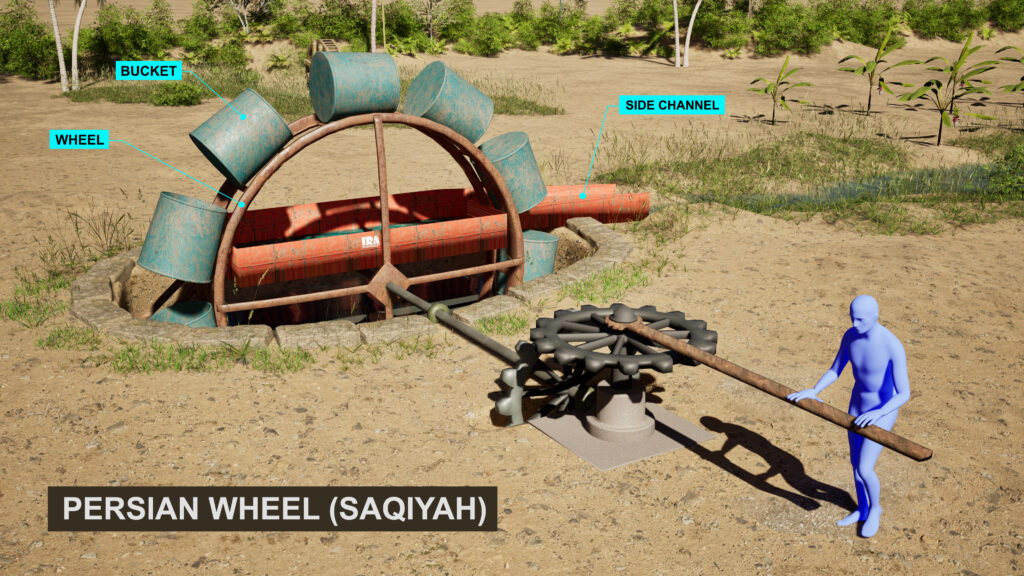
What Is a Persian Wheel (Saqiyah)?
The Persian Wheel is a traditional water-lifting system designed to irrigate dry land. The idea behind it is simple yet smart. A large vertical wooden or metal wheel is fitted with clay or metal buckets around its rim. As the wheel turns, these buckets dip into a well or canal, scoop up water, and lift it to the surface. The water then flows through side channels or aqueducts, directly into nearby farmlands, helping crops grow in regions with little rainfall.
This system was a game-changer in arid climates. With no electricity or fuel needed, the Persian Wheel allowed entire communities to cultivate food and sustain their livelihoods.
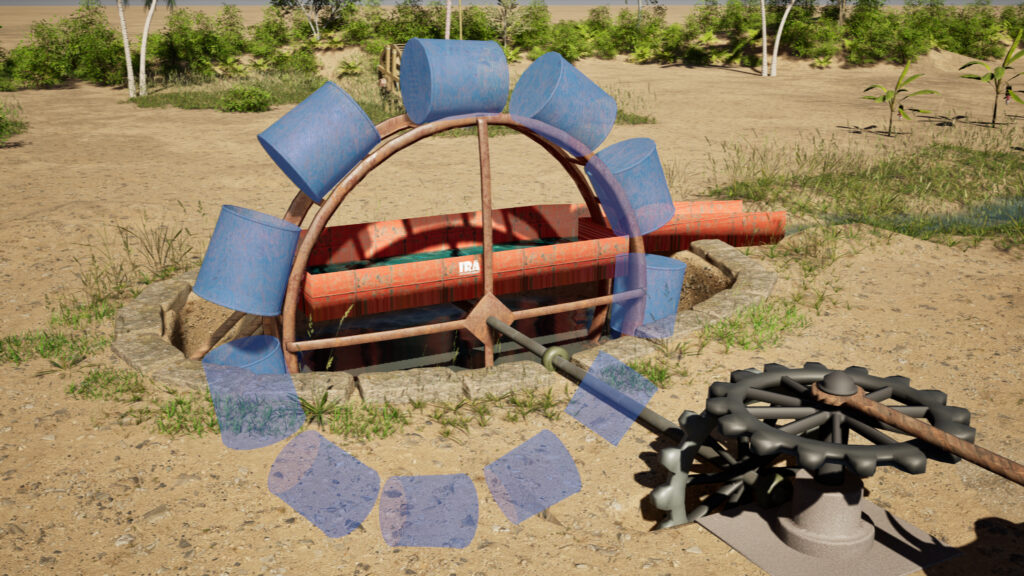
How Was It Operated?
In the beginning, the Persian Wheel was turned by humans using hand power. But as agriculture expanded, animals like oxen, buffaloes, or donkeys were trained to walk in circles, rotating the wheel. To keep the animals from getting dizzy or stopping, their eyes were often blindfolded. This simple trick kept the water flowing continuously for hours!
In some areas, two wheels were used in tandem to pull water from deeper wells. The rotation system used simple gears and levers made from wood, which made repairs easy and affordable.
See it in action-In 3D!
What Materials Were Used?
Traditionally, the Persian Wheel was made using locally available materials:
Wood or Metal: for the frame and wheel structure.
Clay, Copper, or Brass: for the water-carrying buckets.
Rope or Chain: made of jute or metal to link the buckets.
Stone or Mud Bricks: for building the supporting platform.
The design was durable and often handed down through generations, with families maintaining the wheel as part of their farm setup.
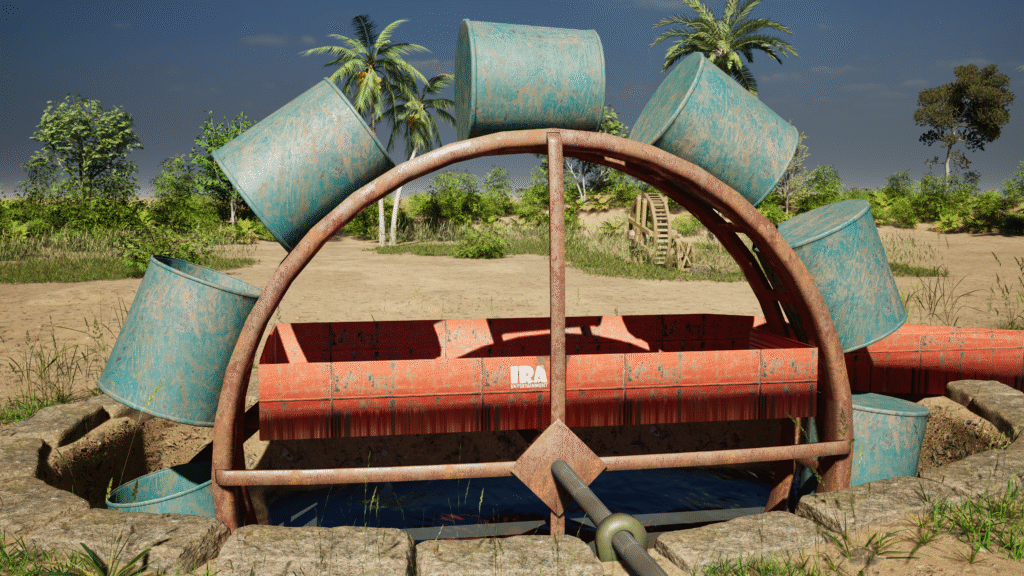
A Glimpse into Its History
The concept of the Persian Wheel is believed to have originated in ancient Persia, around the 1st century BCE, and later spread to the Indian subcontinent during the Mughal era. Historical texts and archaeological findings show its widespread use in regions like Punjab, Gujarat, and Maharashtra, where dry climates made it essential for farming.
In India, it was called by many names like Rahat, Sakia, or Araghatta, depending on the region. Its introduction revolutionized irrigation and helped communities settle in once-dry regions.

A Sustainable Technique Still in Use
Even today, in some rural parts of the world, farmers still use the Persian Wheel. Its simplicity, cost-effectiveness, and environmental friendliness make it a reliable water-lifting technique, especially where electricity or modern pumps are not available.
This tool aligns well with the growing global movement toward sustainable and traditional farming practices, as it uses zero fuel, produces no emissions, and has a minimal carbon footprint.
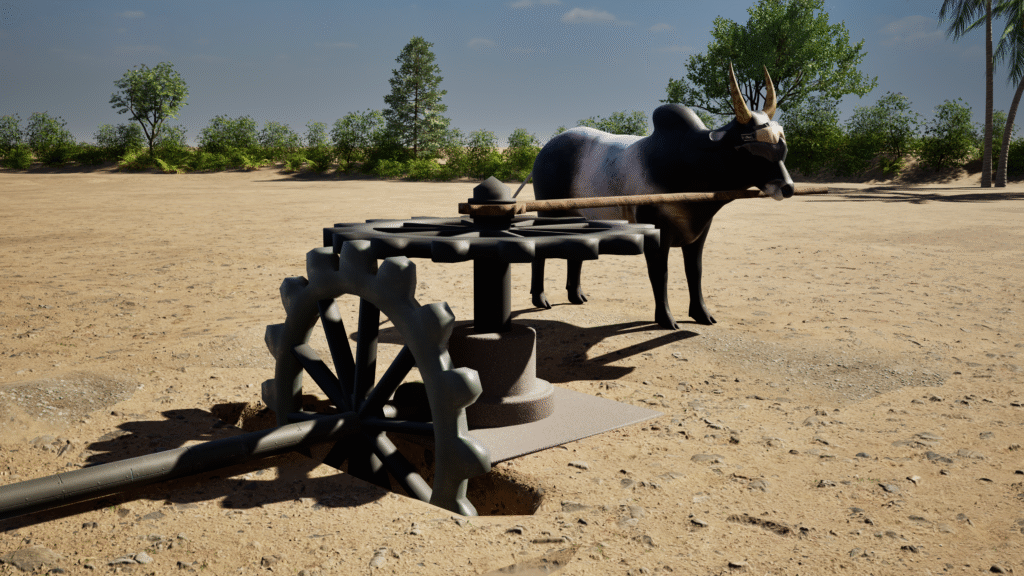
How It Compares to Modern Irrigation Systems
Modern irrigation systems like drip irrigation, sprinklers, and diesel pumps are widely used today, but they often come with high costs, maintenance, and energy demands.
In contrast, the Persian Wheel:
Requires no electricity or fuel
Has low maintenance costs
Is eco-friendly
Can last decades if properly maintained
However, it may not match the speed or volume of water delivery provided by modern systems, which is why it’s often used in small-scale farming today.
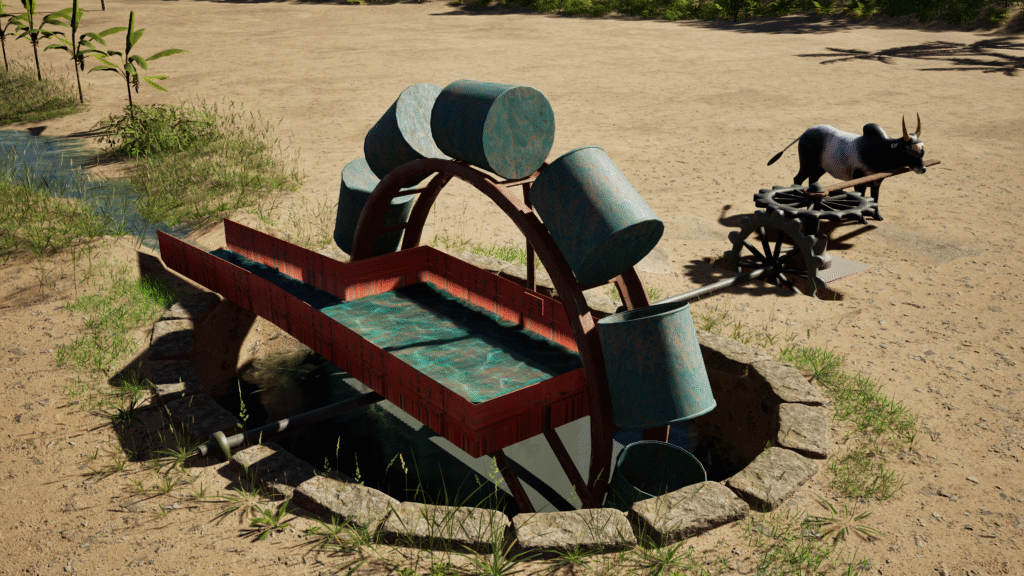
❓ Frequently Asked Questions (FAQ)
Q: Who invented the Persian Wheel?
A: The Persian Wheel originated in ancient Persia over 2,000 years ago and was later adapted across India and other regions.
Q: Is the Persian Wheel still used today?
A: Yes, it is still used in rural areas of India, Pakistan, Egypt, and some African countries.
Q: What was its main benefit?
A: It provided a low-cost and sustainable method of lifting water to irrigate land, especially in dry and rural regions.
Q: What animals were used to operate it?
A: Mainly oxen, buffaloes, and donkeys.
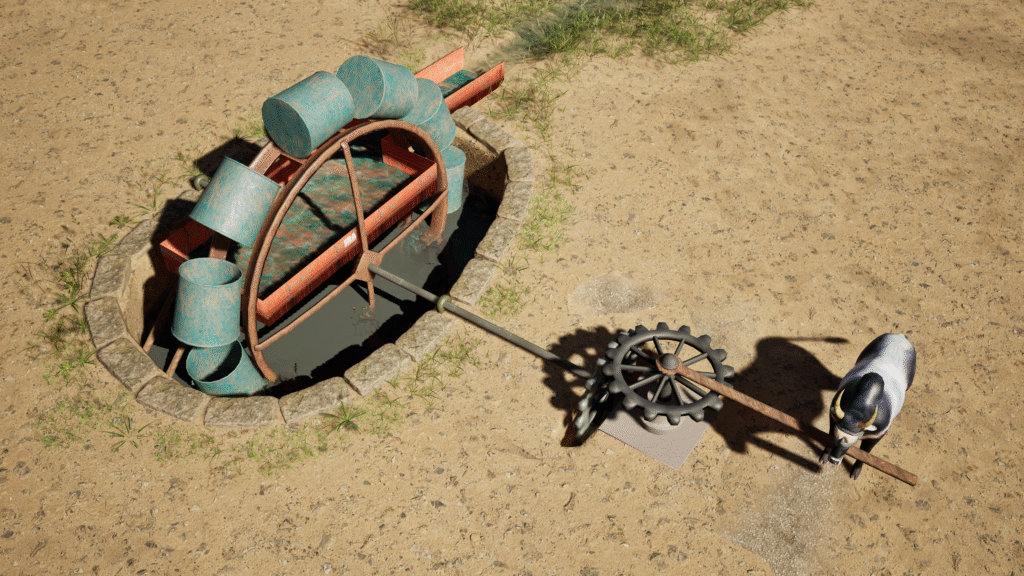
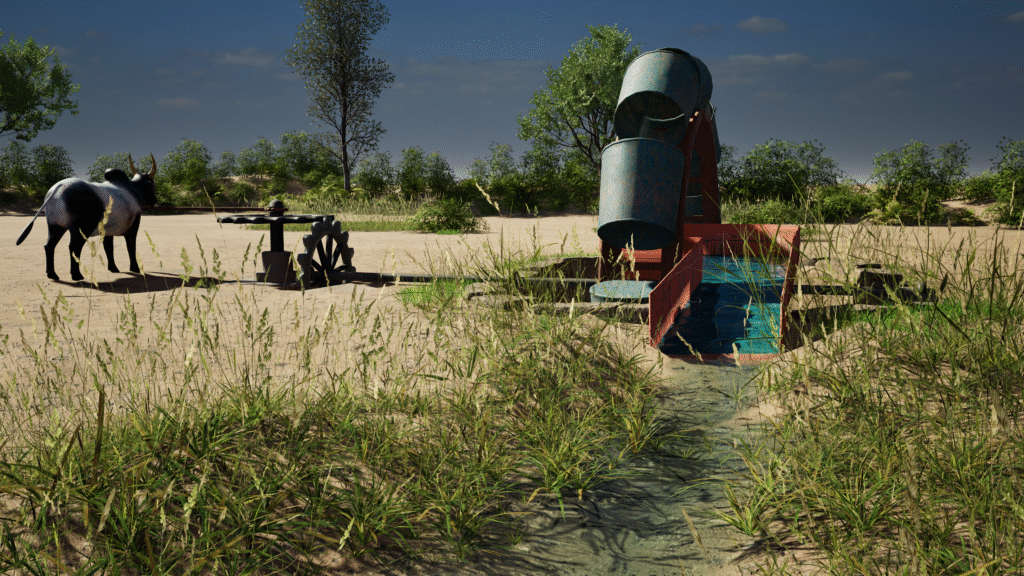
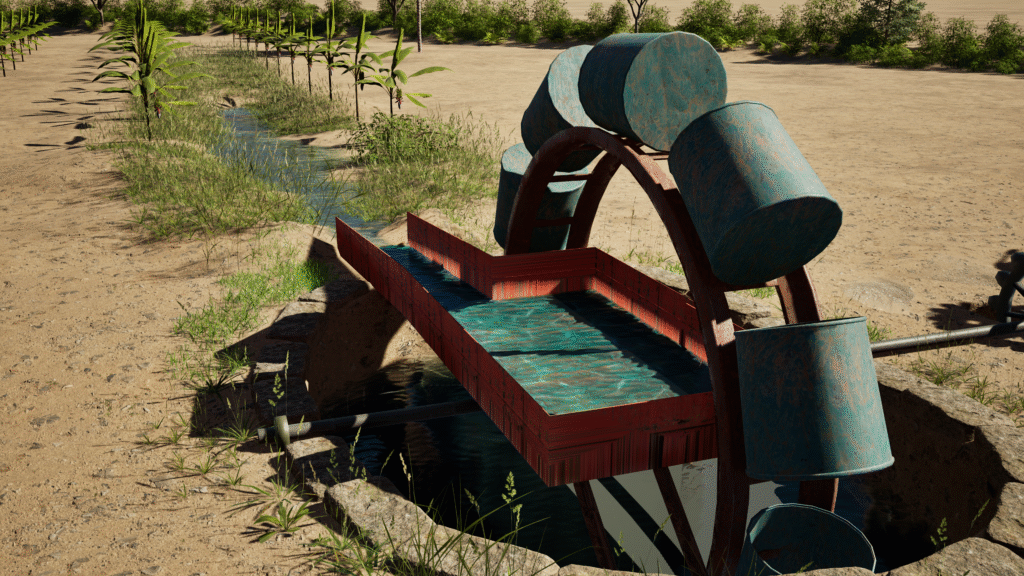
Want to learn more through visual storytelling? Check out our detailed 3D explanation blog on Shadoof-The Ancient Water-Lifting Tool That Changed Farming Forever
Helpful Link